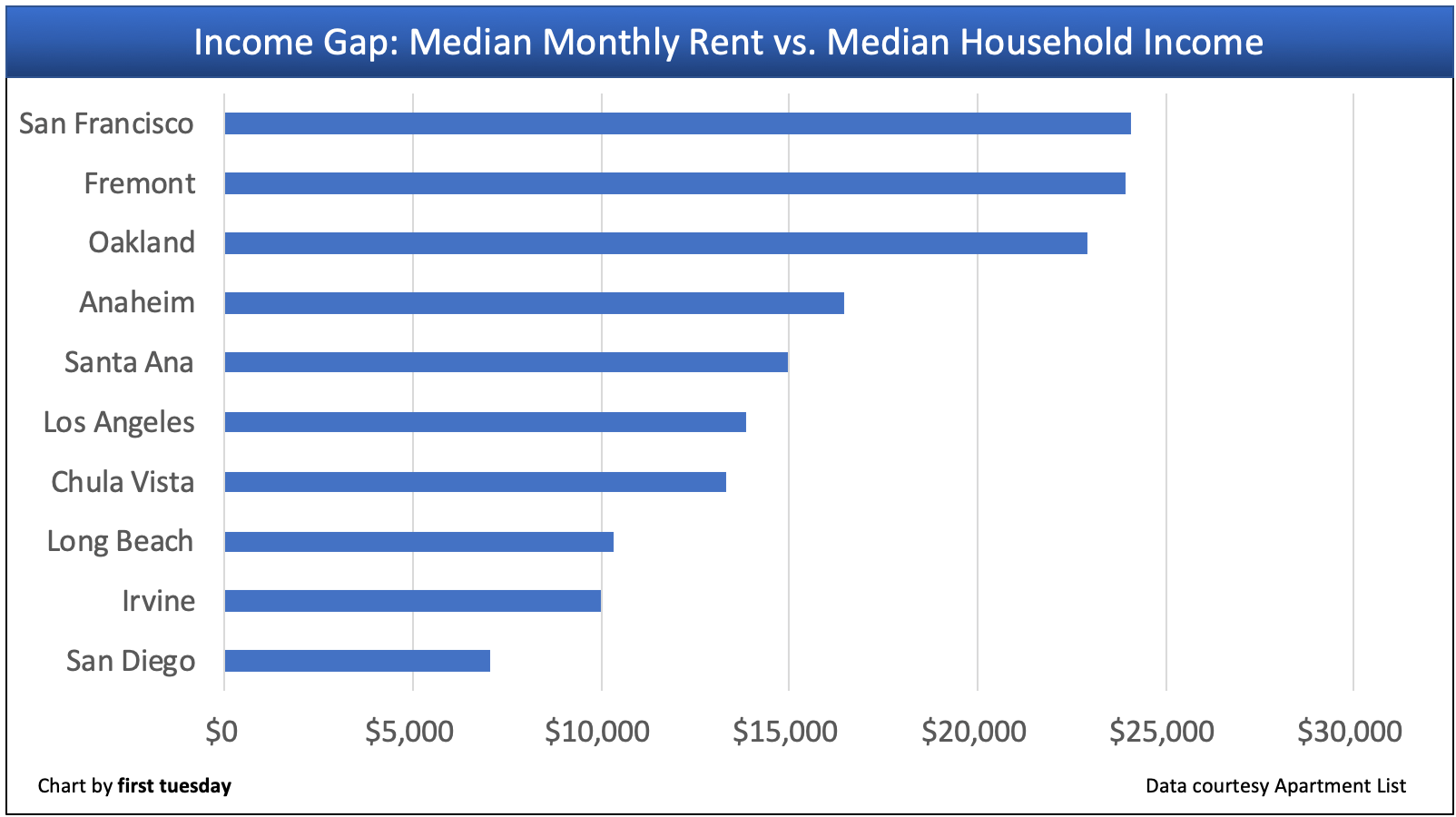Roughly half of U.S. renter households are cost burdened, according to a recent apartment list study. In California, the situation is much worse.
As the study defines it, cost burdened renters spend more than the recommended 30% of their monthly income on rent. Spending more than 30% of one’s income on rent or a mortgage means there is little to nothing leftover to cover necessary expenses, including purchasing essential goods and services. For real estate professionals, this means fewer renters are able to set aside savings each month to accumulate a down payment.
The study found that renters with a median household income seeking a 2-bedroom rental are cost burdened in 25 major U.S. markets. No surprise for anyone familiar with California’s high cost of housing, 12 out of these 25 U.S. cost-burdened metros are located in the Golden State.

The chart above shows the income gap needed to make up the difference between each metro’s median 2-bedroom rental cost versus the income needed to pay this rent at the appropriate 30% median household’s income.
For example, the median annual household income in San Francisco is $99,345. At the recommended 30% maximum share of income spent on housing, this median income household ought to spend no more than $2,484 each month on rent. However, the median 2-bedroom rental costs $3,096 each month. In order to afford the median 2-bedroom rental at 30% of their income, the median income renter needs to earn an additional $24,495 each year.
For a minimum wage worker, or even essential workers living on, say, a teacher’s or paramedic’s salary, the difference is increasingly out of reach. Instead, many workers are moving away from high-cost areas in favor of extreme commutes.
Related article:
More rentals will help homeownership
Even though high rents don’t directly impact everyone, they create many problems for all area residents, including:
- a reduced homeownership rate as fewer renters can save to purchase;
- rising homelessness;
- a crippled economy as renters have less to spend on local goods and services; and
- fewer essential workers who are able to live nearby.
California’s oversized rent-to-income ratio is caused by more renters seeking housing than there are rental units available, a supply-demand issue. This dynamic is emphasized in the state’s low rental vacancy rate, at 4.2% as of the first quarter of 2019, below the 5.5% rental vacancy rate needed for a healthy rental market.
The solution is more multi-family rental construction — especially for low- and moderate-income households. Currently, most new construction is concentrated in the high tier, where builders stand to make the most profit.
California’s elected officials have been working to incentivize builders and local governments to construct more affordable housing. But progress has been slow. To meet the demand clearly present, construction will need to pick up considerably in the coming years. However, as home sales volume and economic growth is slowing in 2019, the next peak in construction starts won’t arrive anytime soon.
Expect the next peak year for multi-family construction to occur following the recovery from the next recession, set to arrive in 2020. Construction will later peak around 2022-2023.
Related article:














